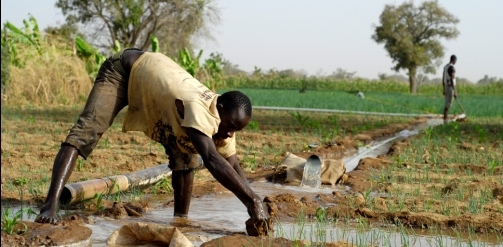
Green Growth Diagnostics for Africa
This project seeks to develop a new Green Growth Diagnostics methodology and apply it to two African countries: Kenya and Ghana.
The original growth diagnostics methodology was developed by Haussmann et al (2004) to identify the key constraints holding back economic growth from its full potential. Their approach was driven by the needs of policymakers facing the dilemma that most problems have multiple causes, but governments cannot tackle all of them at once, given limitations in their financial and executive capacity. This gave rise to the idea of concentrating these limited resources on the binding constraint, which would be identified going through a tool conceptualised as a decision tree. The proponents of the original growth diagnostics also realised that this binding constraint varies between countries and we would argue between sectors.
Six steps to Green Investment Diagnostics
1. Identify target technologies that are economically and financial viable
2. Use economic and social indicators organised in a hierarchical decision-tree framework (see opposite) to make comparative assessment of potential constraints to investment in these technologies.
3. Identify policy areas which are the most ‘binding’ via a deeper search for diagnostic evidence in areas identified as potentially problematic
4. Identify most viable policy options in these areas given political economy realities in the country concerned using political economy analysis
5. Simulate growth and distributional implications of increased investment in RE using Computable General Equilibrium modelling
6. Model impacts of the integration of intermittent renewable energy generation in the national grid using power systems reliability analysis
Project outcomes include:
– July 2016: Chris Dent chaired a panel on non-uniform reliability in developing power systems at the IEEE Power and Energy Society’s General Meeting, Paving the Way for Grid Modernisation
– June 2016: presentation by Dr Ana Pueyo (IDS), Simon Bawakyillenuo (ISSER) and Helen Osiolo (KIPPRA) on the Cost and Return of Renewable Energy in sub-Saharan Africa: a comparison of Kenya and Ghana at the International Energy Workshop, hosted by the University College Cork, Ireland.
– Cost and Returns of Renewable Energy in Sub-Saharan Africa: A Comparison of Kenya and Ghana. IDS Evidence Report 190 (2016). Pueyo, A., Bawakyillenuo, S. and Osiolo, H.
– December 2015: presentation by Dr Ana Pueyo (IDS) on Financing green electrification at COP21 (Paris) side event on Scaling-up investment in clean energy in developing countries (PDF)
– Green Growth Diagnostics for Africa: Literature Review and Scoping Study. IDS Working Paper 455 (2015) Pueyo, A., Spratt, S., Schmitz, H., Willenbockel, D., Dent, C., Wade, N., Crossland, A.
Partners:



.jpg)


